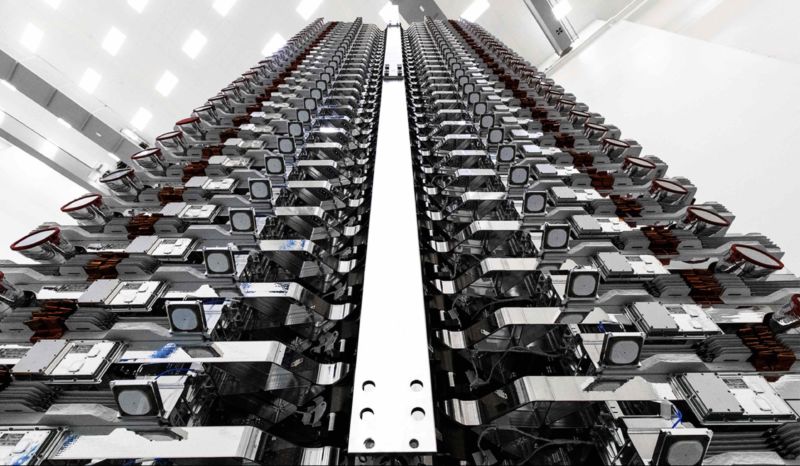SpaceX satellite broadband —
“Fairly wide public beta” to come after latest satellites reach target position.
Jon Brodkin
–

Enlarge / 60 Starlink satellites stacked for launch at SpaceX facility in Cape Canaveral, Florida.
SpaceX’s Starlink broadband has been available in a limited beta for the past few months, and SpaceX has now launched enough satellites for a public beta that will be available to more customers. However, the newly launched satellites aren’t in position yet, and SpaceX hasn’t revealed an exact availability date.
After yesterday’s launch of 60 Starlink satellites, SpaceX CEO Elon Musk wrote on Twitter that
Musk did not say when the satellites will reach their target position. SpaceX has over 700 satellites in orbit after yesterday’s launch.
Astrophysicist provides possible timeline
It could take a few months for all of the 60 new satellites to reach their target positions, according to astrophysicist Jonathan McDowell of the Harvard-Smithsonian Center for Astrophysics. McDowell has been tracking the Starlink satellites’ orbits and providing updates on his website.
Typically, SpaceX splits each batch of 60 satellites into three groups of 20, McDowell told Ars today. “The first group would reach target height in about 45 days; the second and third after 90 and 135 days roughly,” he said. That means all 60 satellites might not be in their target positions until around February 18, 2021.
Musk in April said that a public Starlink beta would start in fall 2020, so perhaps the public beta would begin in November and expand as more satellites reach their target positions.
The limited Starlink beta began in rural parts of Washington state. The “fairly wide public beta” promised by Musk won’t cover the whole United States, but it will cover more of the northern part of the country. One person asked Musk on Twitter whether the Detroit metro area and Ann Arbor, Michigan, will be included in the beta, and Musk replied, “It will soon.”
Speed tests by beta users in August found download speeds ranging from 11Mbps to 60Mbps, upload speeds of 5Mbps to 18Mbps, and latencies of 20ms to 94ms. Starlink also proved useful for Washington state emergency responders, who are using Starlink in areas ravaged by wildfires.

